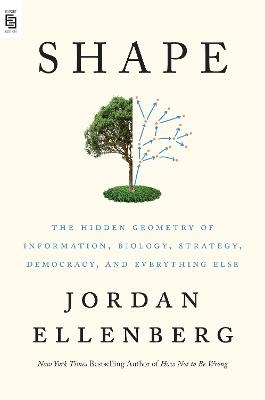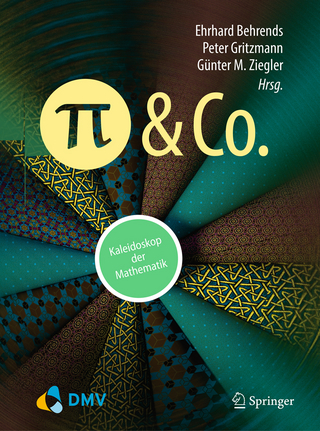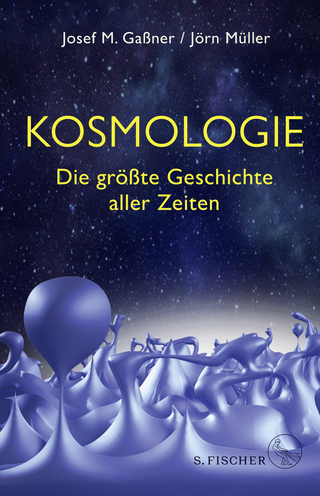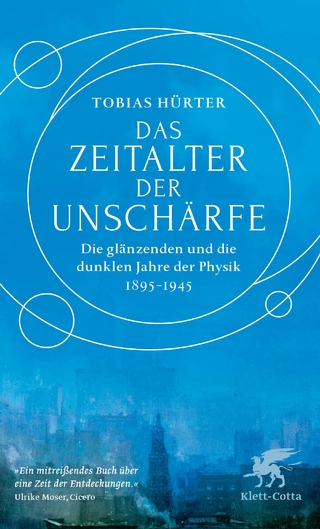
Shape
The Penguin Press (Verlag)
978-0-593-29973-9 (ISBN)
- Titel ist leider vergriffen;
keine Neuauflage - Artikel merken
Unreasonably entertaining....reveals how geometric thinking can allow for everything from fairer American elections to better pandemic planning. - The New York Times
From the New York Times-bestselling author of How Not to Be Wrong himself a world-class geometer a far-ranging exploration of the power of geometry, which turns out to help us think better about practically everything.
How should a democracy choose its representatives? How can you stop a pandemic from sweeping the world? How do computers learn to play Go, and why is learning Go so much easier for them than learning to read a sentence? Can ancient Greek proportions predict the stock market? (Sorry, no.) What should your kids learn in school if they really want to learn to think? All these are questions about geometry. For real.
If you're like most people, geometry is a sterile and dimly remembered exercise you gladly left behind in the dust of ninth grade, along with your braces and active romantic interest in pop singers. If you recall any of it, it's plodding through a series of miniscule steps only to prove some fact about triangles that was obvious to you in the first place. That's not geometry. Okay, it is geometry, but only a tiny part, which has as much to do with geometry in all its flush modern richness as conjugating a verb has to do with a great novel.
Shape reveals the geometry underneath some of the most important scientific, political, and philosophical problems we face. Geometry asks: Where are things? Which things are near each other? How can you get from one thing to another thing? Those are important questions. The word "geometry"comes from the Greek for "measuring the world." If anything, that's an undersell. Geometry doesn't just measure the world it explains it. Shape shows us how.
Jordan Ellenberg is the John D. MacArthur Professor of Mathematics at the University of Wisconsin-Madison. His writing has appeared in Slate, The Wall Street Journal, The New York Times, The Washington Post, Wired, and the Believer.
Chapter 1
"I Vote for Euclid"
In 1864, the Reverend J. P. Gulliver, of Norwich, Connecticut, recalled a conversation with Abraham Lincoln about how the president had acquired his famously persuasive rhetorical skill. The source, Lincoln said, was geometry.
In the course of my law-reading I constantly came upon the word demonstrate. I thought, at first, that I understood its meaning, but soon became satisfied that I did not. . . . I consulted Webster's Dictionary. That told of "certain proof," "proof beyond the possibility of doubt;" but I could form no idea what sort of proof that was. I thought a great many things were proved beyond a possibility of doubt, without recourse to any such extraordinary process of reasoning as I understood "demonstration" to be. I consulted all the dictionaries and books of reference I could find, but with no better results. You might as well have defined blue to a blind man. At last I said, "Lincoln, you can never make a lawyer if you do not understand what demonstrate means;" and I left my situation in Springfield, went home to my father's house, and staid there till I could give any propositions in the six books of Euclid at sight. I then found out what "demonstrate" means, and went back to my law studies.
Gulliver was fully on board, replying, "No man can talk well unless he is able first of all to define to himself what he is talking about. Euclid, well studied, would free the world of half its calamities, by banishing half the nonsense which now deludes and curses it. I have often thought that Euclid would be one of the best books to put on the catalogue of the Tract Society, if they could only get people to read it. It would be a means of grace." Lincoln, Gulliver tells us, laughed and agreed: "I vote for Euclid."
Lincoln, like the shipwrecked John Newton, had taken up Euclid as a source of solace at a rough time in his life; in the 1850s, after a single term in the House of Representatives, he seemed finished in politics and was trying to make a living as an ordinary traveling lawyer. He had learned the rudiments of geometry in his earlier job as a surveyor and now aimed to fill the gaps. His law partner William Herndon, who often had to share a bed with Lincoln at small country inns in their sojourns around the circuit, recalls Lincoln's method of study; Herndon would fall asleep, while Lincoln, his long legs hanging over the edge of the bed, would stay up late into the night with a candle lit, deep in Euclid.
One morning, Herndon came upon Lincoln in their offices in a state of mental disarray:
He was sitting at the table and spread out before him lay a quantity of blank paper, large heavy sheets, a compass, a rule, numerous pencils, several bottles of ink of various colors, and a profusion of stationery and writing appliances generally. He had evidently been struggling with a calculation of some magnitude, for scattered about were sheet after sheet of paper covered with an unusual array of figures. He was so deeply absorbed in study he scarcely looked up when I entered.
Only later in the day did Lincoln finally get up from his desk and tell Herndon that he had been trying to square the circle. That is, he was trying to construct a square with the same area as a given circle, where to "construct" something, in proper Euclidean style, is to draw it on the page using just two tools, a straightedge and a compass. He worked at the problem for two straight days, Herndon remembers, "almost to the point of exhaustion."
I have been told that the so-called squaring of the circle is a practical impossibility, but I was not aware of it then, and I doubt if Lincoln was. His attempt to establish the proposition having ended in failure, we, in the office, sus
| Erscheinungsdatum | 19.05.2021 |
|---|---|
| Zusatzinfo | B&W ILLUS. T/O |
| Sprache | englisch |
| Maße | 156 x 234 mm |
| Gewicht | 533 g |
| Themenwelt | Sachbuch/Ratgeber ► Natur / Technik ► Naturwissenschaft |
| Geisteswissenschaften ► Philosophie | |
| Mathematik / Informatik ► Mathematik ► Algebra | |
| Mathematik / Informatik ► Mathematik ► Angewandte Mathematik | |
| Mathematik / Informatik ► Mathematik ► Geometrie / Topologie | |
| Schlagworte | Applied mathematics • business • Business Analytics • business books • business math • Business Statistics • Education • Fractals • Geek gifts • Geometry • geometry books • gifts for geeks • gifts for teachers • golden ratio • graduation gifts • How Not to Be Wrong • Math • math book • math books • math books for adults • mathematical thinking • Mathematics • mathematics books • Maths • math teacher gifts • nerdy gifts • Neuroscience • nonfiction books • Numbers • Philosophy • philosophy books • Psychology • Science • science books • Self Help • shapes • teacher gifts |
| ISBN-10 | 0-593-29973-6 / 0593299736 |
| ISBN-13 | 978-0-593-29973-9 / 9780593299739 |
| Zustand | Neuware |
| Haben Sie eine Frage zum Produkt? |
aus dem Bereich


